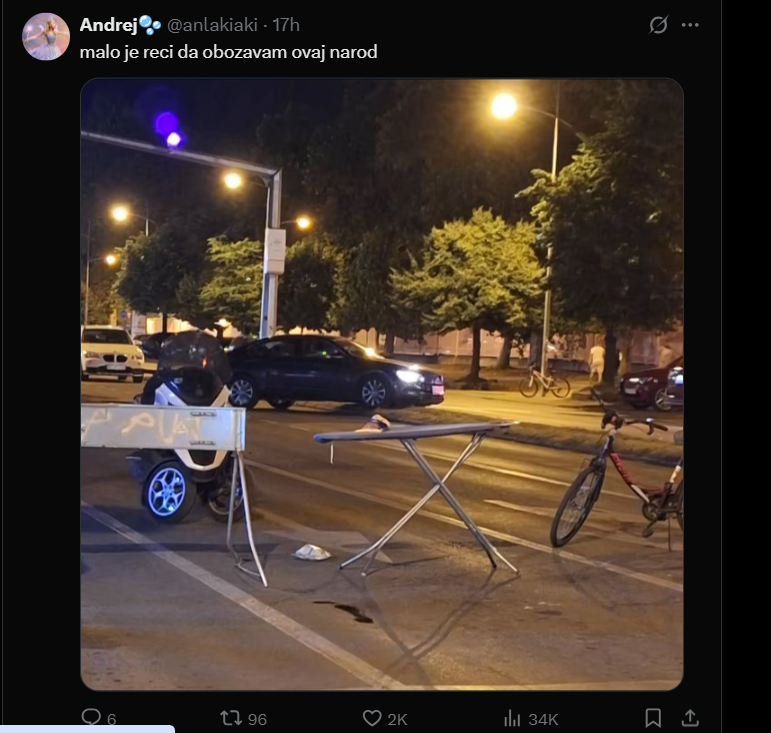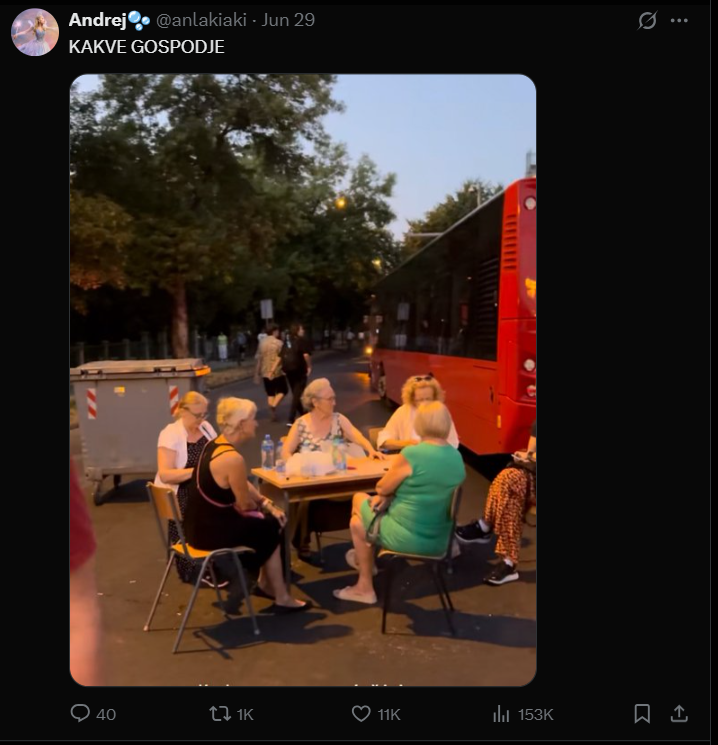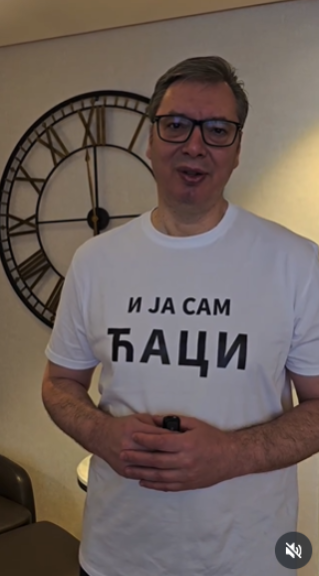The anti-government protests in Serbia started a new wave of street blockades, closing 96 main roads and bridges around the country, during one of the biggest gatherings in the 8-months long series of protests. The weekend rallies were marked with police violence and protesters fighting back with rocks or bottles. The Serbian authorities estimate 36,000 protestors, whereas an independent organization, Archive of Public Gatherings sees the crowd’s size at 140,000.
On Monday, the Serbian police removed the street barricades in Belgrade, in Novi Sad and at least 22 other cities. According to the latest report by Reuters, 79 people were detained on Wednesday July 2, continuing the crackdown on protesters.

Source: X @anlakiaki
The protests led by students started in November, after a newly renovated rail station roof collapsed and killed 16 people in Novi Sad.The citizens blamed corruption in decision-making over infrastructure projects. Even though the Prime Minister Milos Vucevic resigned, the governing party remains in power.
The student-led protest group asked for snap elections and for a release of students who were arrested and accused of plotting a coup. Additionally, they are asking for the closing down of the Pionirksi Park Vučić-support camp (back to this later). Since their demands have not been met by their Sunday, June 28 deadline, the students called for “all existing measures of civil disobedience” and set up metal fences or garbage containers across the city.
Serbian President Aleksandar Vučić announced arrests at a press conference on Sunday and accused protesters of inciting violence, and interference of “foreign powers”, as reported by Reuters. He directly called out the dean of University of Belgrade, Vladan Djokic, who also joined the protests.
The enemy of the state is anyone, even a doctor. Nova reports on a beaten up and arrested doctor who was helping an attendee at the protest in Belgrade. According to the article, the man was offered a plea of guilt for hitting a policeman, which he refused. In return, his arrest was extended to 30 days.
Or for a more peaceful example of what the blockades also looked like, see these, now viral, five ladies who set up a table as a part of their blockade.

Source: X @anlakiaki
A Counter-Protest, “Ćaci” Style
What happens in the Pionirski park, right in front of the National Assembly? Firstly, it is a haven for Vučić’s backers from the whole country. Also students, “who want to study”, nicknamed ćaci, who are ready to go back to studying and supporting the government. This bizarre phenomenon came to be because of a spelling mistake on a graffiti, becoming a meme and a nickname for those who want the protests to end and even gather purposefully for the opposite cause. Many of these students fighting for their education were however enrolled at private universities, never taking part in the city blockades, as reported by The European Correspondent. In their support, president Vučić even wore a t-shirt with “I too am a Ćaci,” fully embracing the movement.

Screenshot from a video on Vučić’s Instagram profile, Source: @buducnostsrbijeav
Proving this, Belgrade attracted not only students, but people of all ages, and whoever Vučić managed to gather with buses from the whole country and Kosovo. Representatives from the Serbian National Council, the Fatherland Movement and the Serbian National Forum warned that people from Kosovo would be brought to Belgrade and get paid to join the anti-protest.
Journalists who went to the Pionirski park camp found out that the people were indeed hired to pretend to be students, with a pay ranging between 50-80 euros per night to sleep in the camp.
What’s Next for Serbia? The Upcoming Elections and the Accession to EU
Serbians were successful once before, in 2000, with the Bulldozer Revolution, they took down Slobodan Milosevic who ended up resigning 2 days after. The bulldozer here is quite literal, as the final win of the opposition was marked by a bulldozer operator turning into the main propaganda TV channel’s headquarters and the opposition taking over the broadcast. Milosevic died while awaiting trial in the international tribunal in the Hague where he was charged with genocide, war crimes and crimes against humanity.
Vučić’s second term ends in 2027, coinciding with the year of the next parliamentary elections.
Serbia is pursuing accession to the EU, and the EU sees it as a strategic goal. However, Vučić remained friendly with Russia, refusing to adopt sanctions, engaged in trade and promoted Russian propaganda. as Vučić said as an attendee of a panel at the Globsec conference in Prague in June this year, that he first needs to overcome the disagreements with Europe about Kosovo, among other issues.
Vučić keeps defending “progress” for 13 years now, while the citizens seem to want something else, at least progress that does not equal corruption, stolen power and harassment of civic society and journalists.
